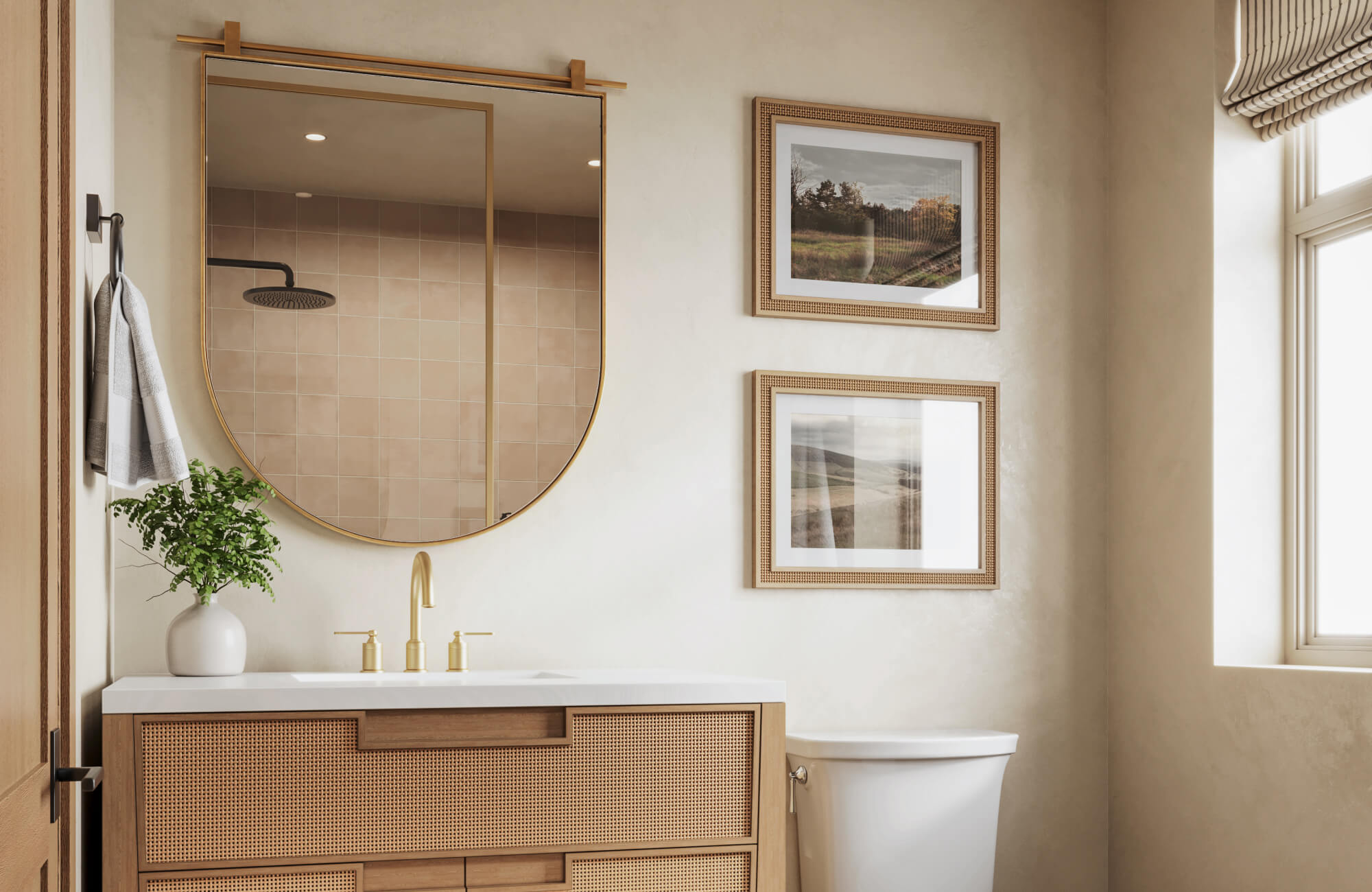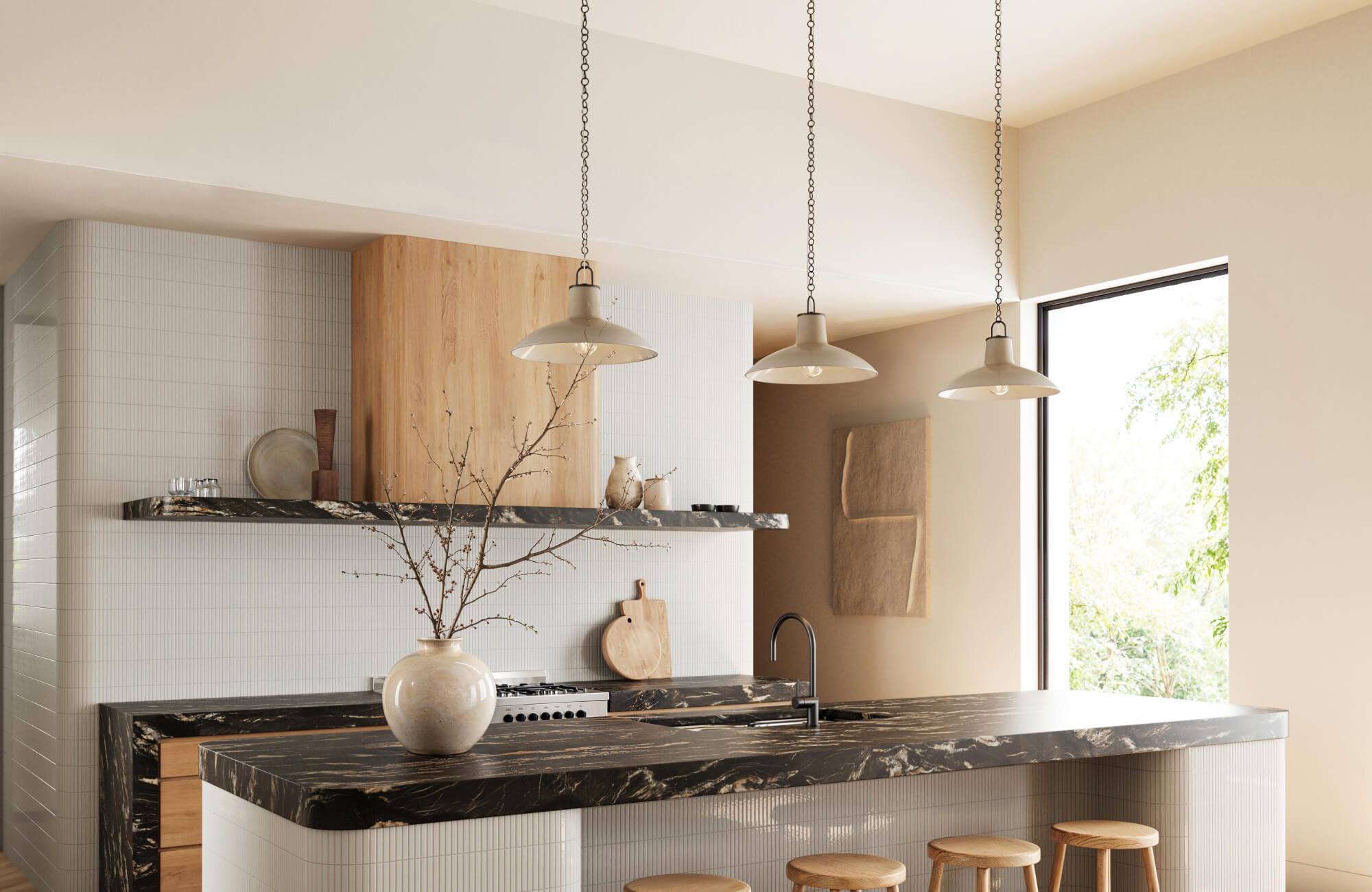Lighting plays a much bigger role in interior design than most people realize. Beyond simply helping you see, it shapes how a room feels, guides the eye, and highlights what matters. When done right, it makes your space more livable and visually balanced without drawing attention to itself.
But poor lighting can throw everything off. Even the best-designed room can feel awkward or incomplete if the lighting is harsh, too dim, or improperly placed. In this guide, we’ll explore how to spot the difference between good and bad lighting, so your home not only looks great, but feels right too.
How to Identify Good vs. Bad Lighting at a Glance
Good lighting doesn’t call attention to itself—it quietly supports the atmosphere of a space while making it more comfortable to live in. Well-lit rooms typically include a mix of ambient, task, and accent lighting, which work together to eliminate harsh shadows and highlight the room’s best features. You’ll also notice that the brightness feels natural, neither too intense nor too dim, and the color temperature suits the function of the space.
Bad lighting, on the other hand, can throw off the feel of an entire room. For instance, one overhead bulb casting glare on everything or overly cool-toned lighting in a cozy lounge can make the space feel uninviting. Uneven shadows, flickering bulbs, and poor placement often create a sense of imbalance, even if the rest of the room is beautifully styled. The key difference lies in how the lighting interacts with both people and the surroundings; good lighting flatters, while bad lighting distracts or disrupts.
Also, visual comfort plays a big role. If a space feels hard on the eyes or forces you to squint, that’s a strong sign that something’s off. Lighting should gently guide the eye, make tasks easier, and set the mood without overwhelming the senses. When in doubt, think about how a room feels at different times of day—good lighting adapts; bad lighting feels rigid and fixed.

How Different Light Fixtures Shape Your Space
Lighting isn’t one-size-fits-all—each fixture type plays a different role in shaping how a room looks and feels. Understanding what each is designed to do helps you avoid common mistakes, like relying on the wrong fixture for the wrong job. Below, we break down the function of key lighting types and how to use them effectively.
Sconces
Wall sconces are all about creating atmosphere. They’re often used to frame mirrors in bathrooms, guide hallways, or provide subtle accent lighting in living spaces. When placed at eye level with soft bulbs, they add warmth and depth without overwhelming the room. However, problems can arise when sconces are installed too high or paired with dim, poorly directed bulbs—this setup can cast unwanted shadows and make the space feel more cave-like than cozy. Proper placement and balanced brightness make all the difference.
Pendants
Pendants, such as our Matteo Pendant in Aged Brass above, are ideal for adding focused light where you need it most, like above kitchen islands or dining tables. Their vertical drop naturally draws the eye and helps define specific zones in open-plan layouts. When spaced and hung correctly, they offer a perfect mix of style and functionality. On the flip side, pendants that hang too low or sit too far apart can block sightlines or leave awkward gaps in light. For a cohesive effect, think through scale, spacing, and how the fixture interacts with its surroundings.
Chandeliers
Chandeliers bring a sense of drama and elegance, making them a standout in entryways, staircases, or above dining tables. They serve as both ambient lighting and a striking visual centerpiece. When chosen in the right scale and design, they elevate the room without overpowering it. But relying solely on a chandelier in a large space can be a misstep; corners may be left dark, and the room can feel incomplete. To avoid that, layer it with additional lighting like sconces or recessed fixtures for a more balanced result.
Flush Mounts
Flush mounts are a go-to for spaces where vertical clearance is limited, such as bedrooms, closets, or hallways. They provide general lighting without encroaching on headroom and can still make a visual statement when thoughtfully selected. Modern flush mounts often double as sleek design accents, blending form with function. However, outdated or oversized styles can throw off a room’s proportions. It’s best to choose fixtures that complement both your ceiling height and design aesthetic to keep the look streamlined.
Picture Lights
Picture lights do more than just illuminate art; they bring depth and focus to your most cherished pieces. Whether placed above a painting, bookshelf, or fireplace, they create refined focal points that elevate the room’s design. The key is subtlety: warm-toned, dimmable bulbs usually work best for highlighting visual art without overpowering it. If the light is too bright or poorly placed, it can cause glare or distort color. A gentle, flattering glow will always serve the piece and the space better.
Linear Fixtures
Linear fixtures are especially useful for long surfaces such as vanities, desks, or dining tables. Their elongated shape ensures even lighting across the area, reducing shadows and improving visibility. This makes them particularly valuable in minimalist or task-oriented settings. That said, picking a fixture that’s too short or overly bright can disrupt the visual flow and function. To get it right, match the length of the fixture to the surface and choose a tone that aligns with your room’s overall palette and purpose.
How Lighting Affects Mood and Perception
Lighting doesn’t just help you see—it subtly influences how a space makes you feel the moment you walk in. The warmth or coolness of a light’s color tone sets the emotional tone. Warm white light feels cozy and comforting, making it perfect for bedrooms or relaxed living areas. Cooler tones, on the other hand, help boost focus and clarity, which is why you’ll often see them in kitchens, bathrooms, or home offices.
Brightness plays a role, too. If a room’s too dim, it can come off as gloomy or draining, while overly harsh lighting might feel cold or clinical. That’s why adjustable lighting, like dimmers or layered setups, is so valuable. It lets you shift the mood throughout the day, from bright and energized to soft and winding down, without having to change the fixtures.
The direction of your lighting matters just as much. Uplighting can make a room feel open and airy, while downlighting offers practical focus, though if it’s too strong, it might cast unflattering shadows. Diffused lighting helps smooth everything out, and targeted spotlights are great for drawing attention to things like a piece of art or architectural detail. When the lighting supports both how a room looks and how it feels, that’s when it truly works.
The Role of Natural Light vs. Artificial Fixtures
Natural light is often one of a room’s greatest assets—it can open up a space, lift the mood, and bring out the true colors of your interiors. When well-managed, daylight enhances everything from wall paint to furnishings, creating a sense of warmth and clarity that artificial lighting sometimes struggles to match. Large windows, skylights, or even glass doors can make a room feel more connected to the outdoors.
That said, natural light isn’t always predictable. Harsh midday sun can wash out colors or create glare on screens and surfaces, while cloudy days or windowless rooms leave everything looking flat. This is where strategic lighting placement matters; fixtures should complement natural light, not fight against it. Sheer curtains and light-filtering blinds can soften brightness, while well-placed lamps or sconces can step in when daylight fades.
In darker areas of the home, the right artificial lighting becomes essential. It’s not just about brightness but the tone of the light, too—cooler bulbs can feel out of place in cozy spaces, while overly warm bulbs may not provide enough clarity in work zones. Matching bulb color temperature to the room’s purpose and daylight availability helps ensure a comfortable, consistent feel throughout the day.
Lighting Mistakes That Sabotage Interior Design
Lighting might feel like one of the last things to worry about, but it can quietly make or break a room’s overall vibe. Even the best-designed spaces can feel flat, cold, or awkward when the lighting isn’t quite right. Below are a few of the most common lighting missteps and how a few thoughtful changes can completely shift the mood and functionality of your space.
Mismatched Color Temperatures Across Fixtures
Mixing warm and cool light within the same space often creates a jarring or disjointed atmosphere. For example, pairing crisp white task lighting with soft amber ambient bulbs can confuse the eye and make the room feel off balance. It’s best to stick with one consistent color temperature per area to maintain a cohesive look. This is especially important in open-concept spaces where lighting overlaps between zones.
Under-Lighting Functional Zones
Work areas like vanities, kitchen counters, or home desks need more than general overhead light, they need proper task lighting. If these zones are too dim, they can become frustrating or even unsafe to use. Adding pendants, sconces, or under-cabinet lighting can dramatically improve comfort and visibility. Good lighting should support the way you use the space, not make tasks harder.
Over-Reliance on Overhead Ceiling Lights
Relying only on ceiling fixtures can lead to harsh shadows and leave the room feeling one-dimensional. Without a mix of light sources, like floor lamps, table lamps, or wall sconces, your space can come across as cold or underwhelming. Overheads are just one layer—for a well-lit room, you need a combination that adds warmth, texture, and depth. It’s not just about brightness, but how that brightness is spread.
Neglecting Corners and Accent Areas
Unlit corners or overlooked details can make a room feel unfinished, even if everything else is beautifully styled. Accent lighting, whether it's a picture light, small uplight, or LED strip, can breathe life into those forgotten spots. These touches create dimension and highlight the character of your space. It's the subtle glow in the background that often makes a room feel polished and inviting.
Making Lighting Choices That Actually Support Your Home
Lighting isn’t just about visibility, it’s a subtle yet powerful element that shapes the way we experience our homes. From setting the mood to highlighting architectural features, good lighting works in harmony with your interior design, while poor lighting quietly undermines it. Knowing the difference comes down to how it makes you feel: supported, balanced, and comfortable, or strained, disconnected, and off-key.
If you’re unsure about the lighting choices in your home, a personalized design consultation can help you bring clarity to the process. Whether you're adjusting fixture placement, layering light more effectively, or choosing the right tone and style for your space, expert guidance can make the difference between a room that simply lights up and one that truly comes to life.












